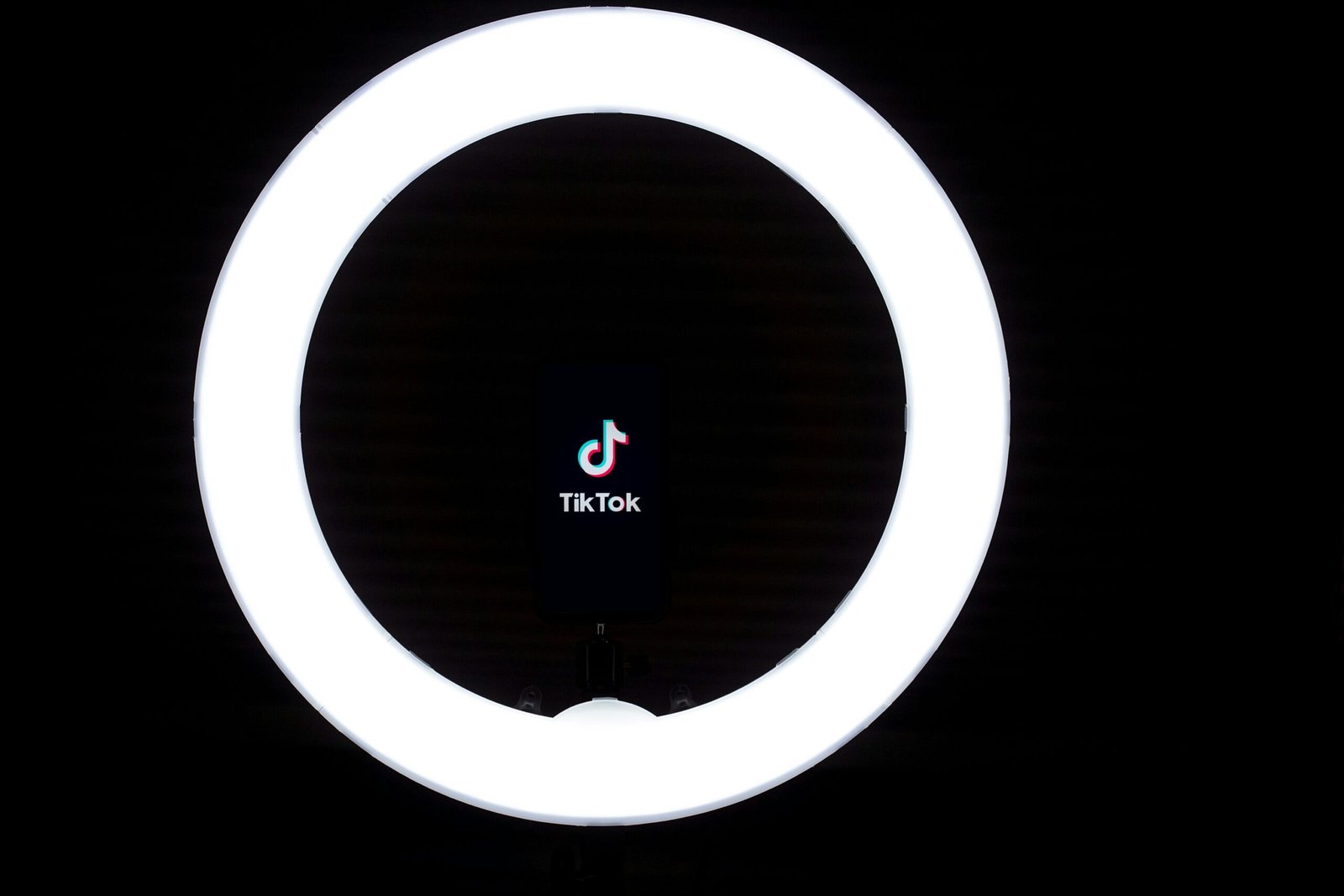
The 5 Biggest Social Media Trends in 2024
Introduction to Social Media Trends in 2024
In the fast-paced digital age, the significance of staying abreast of social media trends cannot be overstated. For both businesses and individuals, these trends are pivotal in shaping marketing strategies, enhancing user engagement, and fostering brand growth. The social media landscape is ever-evolving, driven by technological advancements and shifting user preferences, making it essential to stay informed about the latest developments.
Understanding social media trends is crucial for crafting effective marketing strategies. By leveraging the latest trends, businesses can create more targeted and engaging content, which increases visibility and fosters deeper connections with their audience. This, in turn, can lead to higher conversion rates and customer loyalty. Similarly, individuals who stay updated with social media trends can enhance their personal brand, expand their network, and seize new opportunities in the digital realm.
The rapid evolution of social media platforms also impacts user engagement. Features such as live streaming, augmented reality filters, and interactive polls have transformed how users interact with content. By adopting these trends, businesses can create more immersive and interactive experiences for their audience, leading to higher engagement rates and a stronger online presence.
Moreover, keeping pace with social media trends is vital for brand growth. As new platforms and features emerge, businesses must adapt to stay relevant and competitive. Those that fail to do so risk falling behind their competitors and losing touch with their target audience. By staying informed and agile, brands can capitalize on new opportunities, reach wider audiences, and maintain their relevance in the ever-changing digital landscape.
In conclusion, understanding and integrating social media trends is a key factor for success in today’s digital age. Whether it’s for businesses looking to enhance their marketing efforts or individuals aiming to build their personal brand, staying updated with the latest trends is essential for thriving in the dynamic world of social media.
The Rise of Short-Form Video Content
In 2024, short-form video content continues to dominate the social media landscape, with platforms like TikTok, Instagram Reels, and YouTube Shorts leading the charge. This format’s compelling nature lies in its brevity and capacity to deliver engaging, bite-sized content that captures users’ attention quickly. The surge in popularity is reflected through impressive statistics: TikTok, for instance, boasts over 1 billion monthly active users, while Instagram Reels has seen a 22% increase in engagement since its inception.
Short-form videos are particularly effective for brands due to their ability to convey messages succinctly and creatively. These videos often employ visually appealing elements, music, and rapid editing techniques that keep viewers hooked. Studies show that short-form video content has a higher completion rate compared to longer formats, making it an impactful method for delivering marketing messages and storytelling.
Brands are leveraging this trend by creating content that resonates with their audience’s interests and behaviors. For example, companies like Dunkin’ have harnessed TikTok to launch viral challenges, driving user-generated content and brand interaction. Similarly, fashion brands are utilizing Instagram Reels to showcase new collections in dynamic ways, providing followers with a fresh and immersive experience.
For businesses looking to tap into the potential of short-form videos, it is crucial to focus on authenticity and relevance. Content should be tailored to the platform’s unique environment and audience preferences. Engaging storytelling, behind-the-scenes glimpses, and user-generated content are effective strategies. Additionally, utilizing analytics to understand what resonates with viewers can help refine content strategies and maximize engagement.
Overall, the surge in short-form video content represents a shift in how users consume information and entertainment. By embracing this trend, businesses can enhance their connection with audiences, foster engagement, and drive brand loyalty in an ever-evolving digital landscape.
Trend 2: The Expansion of Social Commerce
Social commerce is rapidly transforming the way consumers shop online, with social media platforms integrating shopping features directly into their applications. This trend is being driven by the desire for a more seamless purchasing experience, offering both businesses and consumers significant advantages. Among the platforms at the forefront of this trend are Instagram Shopping, Facebook Marketplace, and TikTok Shopping.
Instagram Shopping allows users to discover and purchase products without leaving the app. Businesses can create an immersive storefront that showcases their brand and products, making it easier to convert followers into customers. Instagram’s “Shop” tab is designed to act as a personalized storefront for users, driven by algorithmic recommendations based on user interests and activity.
Facebook Marketplace, another key player in social commerce, enables users to buy and sell items within their local communities. Integrated with Facebook’s vast social network, Marketplace provides an easy and trustworthy way for users to find what they need, while businesses can reach a highly targeted audience with minimal effort.
TikTok Shopping, a more recent entrant, leverages the platform’s engaging video content to drive product discovery and sales. The integration of shopping features within TikTok allows businesses to capitalize on viral trends and influencer partnerships to reach a younger, highly engaged audience. By enabling users to purchase products directly from videos, TikTok enhances the immediacy and impulse nature of shopping.
For businesses, social commerce offers the benefit of higher conversion rates, as it reduces the friction between product discovery and purchase. Consumers benefit from a more integrated and convenient shopping experience, with the ability to explore and buy products within the social media environment they are already engaged in.
Successful social commerce campaigns are abundant, such as Nike’s limited-edition product drops on Instagram, which create urgency and exclusivity, driving high engagement and sales. Another example is Sephora’s use of Facebook and Instagram to offer virtual try-ons and personalized beauty advice, enhancing the customer’s shopping experience and boosting conversion rates.
Trend 3: Increased Focus on Privacy and Data Security
In 2024, the focus on user privacy and data security has intensified, driven by an evolving regulatory landscape and increasing user awareness. Policies such as the General Data Protection Regulation (GDPR) and the California Consumer Privacy Act (CCPA) have set stringent standards for data handling, compelling social media platforms to adapt their practices. These regulations mandate greater transparency, giving users more control over their personal information and ensuring companies are accountable for data protection.
Social media platforms are now prioritizing the implementation of robust data security measures to maintain trust and compliance. Encryption, two-factor authentication, and regular security audits have become standard practices. Additionally, platforms are providing clearer privacy policies and user-friendly tools for managing privacy settings, thereby fostering an environment of transparency and trust.
The importance of transparency cannot be overstated. Users are increasingly seeking platforms that respect their privacy and safeguard their data. This shift in user expectations requires businesses to adopt a proactive approach to data security. For businesses, staying compliant involves not only adhering to regulations but also educating themselves and their users about privacy practices. Regularly updating privacy policies and ensuring they are easily accessible and understandable is crucial.
Moreover, businesses should consider conducting regular data protection impact assessments (DPIAs) to identify and mitigate risks associated with data processing activities. Ensuring that third-party partners comply with privacy standards is equally important. By adopting a comprehensive approach to data security, businesses can build trust with their audience, which is essential for long-term success in the digital age.
In summary, the increased focus on privacy and data security in 2024 is reshaping the social media landscape. Adapting to regulatory changes and user demands is not merely a compliance issue but a strategic imperative. By prioritizing transparency and robust data protection measures, businesses can foster trust and loyalty among their users, ensuring a safer and more secure online environment for all.
Trend 4: The Growth of Augmented Reality (AR) and Virtual Reality (VR)
The integration of Augmented Reality (AR) and Virtual Reality (VR) into social media platforms is rapidly transforming the digital landscape, offering users unprecedented levels of interaction and engagement. As these technologies advance, social media platforms are leveraging AR and VR to create more immersive experiences. A prime example is Snapchat’s AR filters, which have revolutionized how users interact with their content, allowing them to overlay digital elements onto their real-world surroundings. Similarly, Instagram’s AR effects enable users to add dynamic and interactive elements to their photos and videos, enhancing the overall engagement on the platform.
Facebook’s Horizon Worlds takes this a step further by providing a fully immersive virtual environment where users can create, explore, and interact with each other in a 3D space. This marks a significant evolution in how social media can be experienced, moving beyond traditional two-dimensional interfaces. Brands are capitalizing on these advancements to create more engaging and interactive marketing campaigns. For instance, AR can be used for virtual product try-ons, allowing customers to visualize products in their own space before making a purchase. VR, on the other hand, offers the potential for virtual events, where users can attend concerts, conferences, or brand launches from the comfort of their homes, creating a sense of presence and participation that was previously unattainable.
As AR and VR technologies continue to evolve, we can expect to see even more sophisticated applications in social media. Future developments may include more seamless integration of these technologies into everyday social media use, such as real-time AR overlays during live streams or enhanced VR environments for social interactions. These advancements will likely have a profound impact on how users interact with both content and each other, making social media a more immersive and engaging space. Brands that stay ahead of these trends and effectively utilize AR and VR in their marketing strategies will be well-positioned to capture the attention and loyalty of their audiences.
Trend 5: The Influence of Nano and Micro-Influencers
In 2024, the landscape of influencer marketing is shifting significantly towards nano and micro-influencers. These influencers, typically defined as having between 1,000 to 100,000 followers, are gaining traction due to their highly engaged and dedicated audiences. Unlike their macro counterparts, nano and micro-influencers boast higher engagement rates and foster more authentic connections with their followers. This is primarily because their smaller following allows for more personalized interactions and a stronger sense of community.
Brands are increasingly recognizing the value of these influencers for several reasons. Firstly, their content tends to be more relatable and trustworthy, which resonates well with their audience. This authenticity often translates into higher engagement rates, as followers are more likely to trust and act upon their recommendations. Additionally, the cost of partnering with nano and micro-influencers is generally lower compared to macro-influencers, making them a cost-effective option for brands looking to maximize their marketing budgets.
To effectively leverage nano and micro-influencers, brands should adopt specific strategies. Identifying the right influencers involves thorough research into their audience demographics, engagement metrics, and content quality. Tools like social media analytics platforms can assist in this process, providing insights into potential influencers’ performance and audience alignment with the brand’s target market.
Once suitable influencers are identified, collaboration should be approached with a focus on building genuine relationships. This can be achieved through personalized outreach and clear communication of the brand’s values and expectations. Long-term partnerships are often more beneficial than one-off campaigns, as they allow for more authentic content creation and deeper audience connections. Additionally, providing influencers with creative freedom can result in more original and engaging content, further enhancing the campaign’s effectiveness.
In conclusion, the influence of nano and micro-influencers is set to grow in 2024, offering brands a more targeted and effective way to reach their audiences. By understanding their unique value and employing strategic collaboration methods, brands can harness the power of these influencers to achieve impactful marketing outcomes.
How to Adapt Your Social Media Strategy for 2024
As social media continues to evolve, it is crucial for businesses and individuals to adapt their strategies to stay relevant. The key to thriving in 2024 is flexibility, continuous learning, and staying updated with platform changes. This ensures that your social media efforts are not only current but also effective.
First and foremost, embrace flexibility in your social media strategy. Trends can shift rapidly, so being adaptable allows you to pivot quickly in response to new developments. For instance, if a particular type of content or platform feature becomes popular, being able to integrate it into your strategy promptly can provide a competitive edge.
Continuous learning is another essential component. Social media platforms frequently update their algorithms and features. Staying informed about these changes can significantly impact your reach and engagement. Subscribe to industry blogs, attend webinars, and participate in relevant forums to keep your knowledge up-to-date.
When it comes to content creation, focus on authenticity and value. Audiences are increasingly drawn to content that resonates on a personal level. Utilize storytelling, user-generated content, and behind-the-scenes glimpses to build a genuine connection with your audience. Additionally, leverage new features such as live streaming and augmented reality to create engaging and immersive experiences.
Engagement with your audience should be a top priority. Active interaction through comments, messages, and community posts fosters a sense of loyalty and community. Utilize analytics tools to monitor engagement metrics and adjust your approach based on what resonates most with your audience.
Data-driven decision-making is indispensable in refining your social media strategy. Regularly analyze performance metrics such as reach, engagement, and conversion rates. These insights help identify what is working and what needs adjustment, enabling you to make informed decisions that enhance your strategy’s effectiveness.
Finally, don’t overlook the importance of leveraging new technologies. Artificial intelligence and machine learning can offer valuable insights and automation opportunities, while tools like chatbots can enhance customer service and engagement. By staying ahead of technological advancements, you can optimize your social media efforts and achieve better results.
Adapting your social media strategy for 2024 involves a combination of flexibility, continuous learning, and data-driven decision-making. By staying updated with platform changes and leveraging new features and technologies, you can create content that resonates with your audience and drives meaningful engagement.
Conclusion: Embracing the Future of Social Media
As we navigate the rapidly evolving landscape of social media, it is imperative to stay informed about the latest trends shaping the industry. In 2024, several key trends have emerged, each offering unique opportunities and challenges for brands, marketers, and individuals alike. From the rise of short-form video content to the growing importance of social commerce, these trends are redefining how we engage with digital platforms and connect with audiences.
One significant trend is the prioritization of authenticity and transparency, which is driving brands to foster genuine connections with their followers. Additionally, the integration of augmented reality (AR) and virtual reality (VR) is transforming user experiences, offering immersive and interactive content that captivates and retains audience interest. The increasing reliance on artificial intelligence (AI) for personalized content curation and customer service is another trend that cannot be ignored, as it enhances user engagement and satisfaction.
Moreover, the shift towards decentralized social networks is gaining momentum, emphasizing user control and privacy in response to growing concerns about data security. Lastly, the emphasis on social responsibility and ethical marketing is shaping brand strategies, encouraging businesses to align their messaging with societal values and contribute to positive change.
As these trends continue to unfold, it is crucial for businesses and individuals to proactively integrate new strategies into their social media plans. By embracing these changes and staying agile, you can effectively leverage the latest innovations to enhance your online presence and achieve your social media goals. We invite you to share your thoughts on these trends and how you plan to implement them in your own social media efforts. Your insights and experiences are invaluable as we collectively navigate the future of social media.

